As an ETF analyst, I’ve seen countless new fund launches, but rarely do I put my own money into them right away.
Typically, I like to let a new ETF prove itself—watching its inflows, tracking liquidity, and gauging its overall adoption in the market.
Well, I broke that tradition today, making a $67,256 investment in a new U.S. dividend growth ETF from Hamilton ETFs.
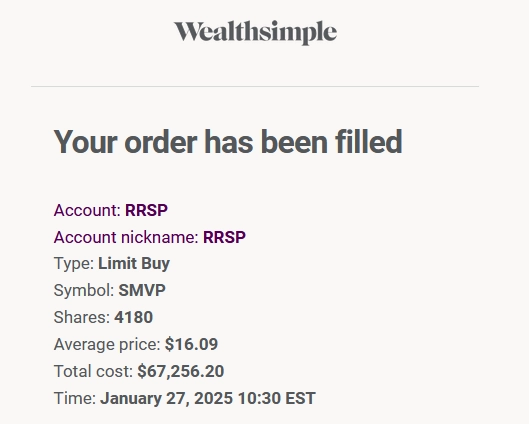
I’ve been eagerly anticipating this launch ever since I spotted its prospectus filed on SEDAR, and after taking a closer look, I couldn’t resist.
Here’s why I’m bullish about this ETF, its Canadian counterpart, and also the lightly leveraged versions Hamilton is also rolling out.
Why invest in Dividend Champions?
I’ve long been a fan of dividend growth strategies—not because I care about income, but because of the total return potential they bring. Screening for companies with years of consecutive dividend increases naturally tilts a portfolio toward the quality factor.
For example, U.S.-listed ETFs like the Vanguard Dividend Appreciation ETF (NYSE:VIG) and the ProShares S&P 500 Dividend Aristocrats ETF (NYSE:NOBL), which require 10 and 25 years of dividend growth respectively, exhibit a clear tilt toward the Fama-French profitability and investment factors.
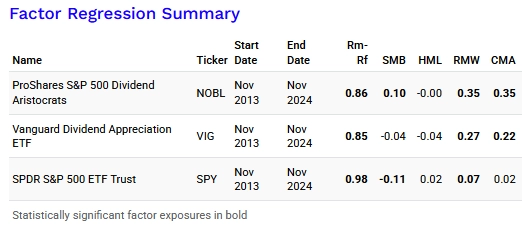
In other words, the companies in these ETFs, on average, demonstrate strong earnings potential, efficient allocation of capital, and consistent financial health.
The problem? Both VIG and NOBL are U.S.-listed ETFs, which means dealing with currency conversion costs, especially painful right now with the CAD at multi-year lows against the USD.
Canadian-listed alternatives haven’t been much better. For example, VIG’s Canadian counterpart, the Vanguard U.S. Dividend Appreciation Index ETF (TSX:VGG), charges a steep 0.30% expense ratio—five times the cost of VIG at 0.06%. NOBL is even pricier at 0.35%.
Worse still, the main Canadian dividend growth ETF, the iShares S&P/TSX Canadian Dividend Aristocrats Index ETF (TSX:CDZ), carries an eye-watering 0.66% expense ratio.
Hamilton ETFs has solved this issue with the launch of the HAMILTON CHAMPIONS™ U.S. Dividend Index ETF (TSX:SMVP) and the HAMILTON CHAMPIONS™ Canadian Dividend Index ETF (TSX:CMVP).
SMVP focuses on U.S. companies with 25+ years of consecutive dividend growth, while CMVP targets Canadian companies with 6+ years. On average, both ETFs feature a 10% annual historical dividend growth rate. Both ETFs track custom equal-weighted indices developed by Solactive.
What makes this even better is Hamilton’s bold move to waive management fees on both ETFs until January 31, 2026. That’s right—0% management fees for one year, an incredibly rare and investor-friendly strategy in the Canadian ETF market.
What I like about SMVP and CMVP
Hamilton has shared key metrics for the indices that both SMVP and CMVP track, and the results are impressive. Historically, both indices have delivered total returns that are competitive with their respective benchmarks—the S&P 500 for SMVP and the S&P/TSX 60 for CMVP.
However, they’ve done so with some significant advantages: lower volatility, shallower and shorter maximum drawdowns, lower valuations, and higher dividend yields.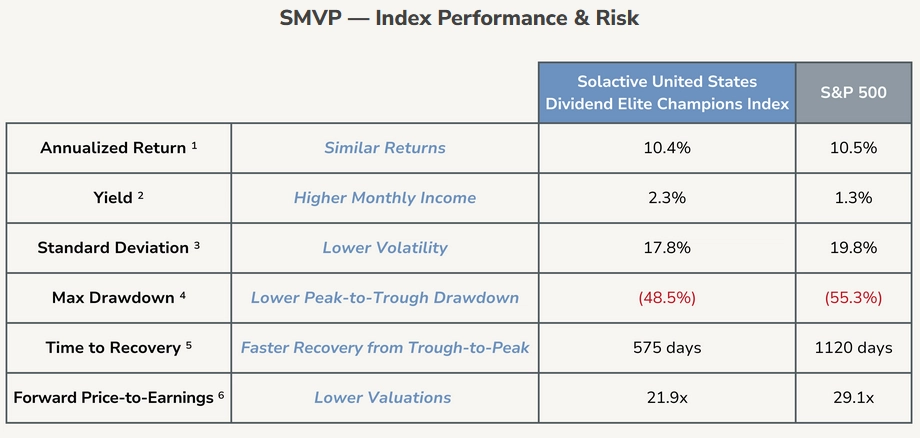
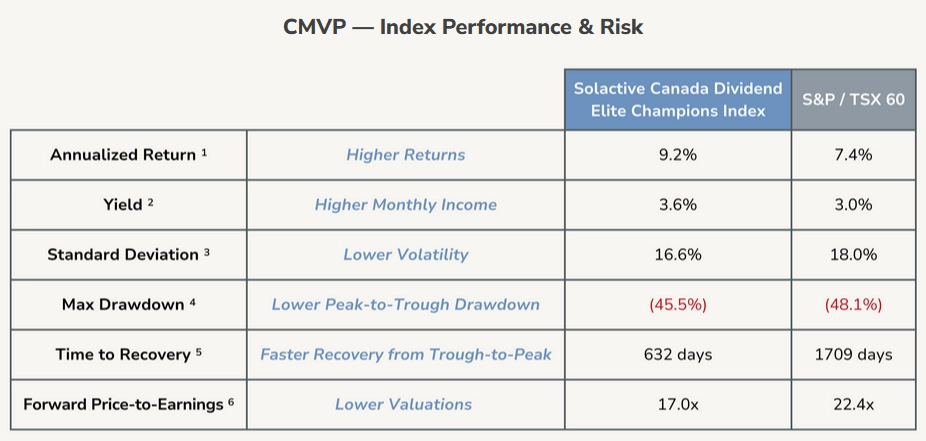
Another standout feature is the sector composition. Unlike many dividend ETFs that tend to skew heavily toward utilities and financials, SMVP has a refreshing tilt toward defensive sectors like consumer staples and healthcare, along with a substantial allocation to industrials.
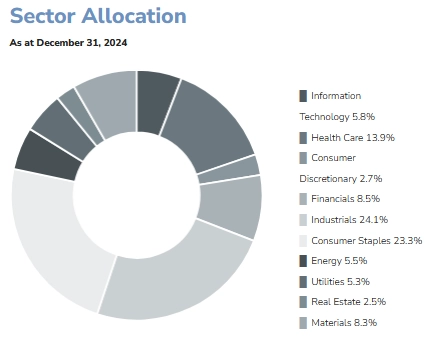
The holdings include many blue-chip bellwether stocks, making this ETF a strong contender for those who value stability and quality.
As I’m writing this, the S&P 500 index is down 1.95% due to fears about China’s new DeepSeek AI model. SMVP is actually up 1.13%!
Both SMVP and CMVP have performed well against their benchmark indices, but what makes them even more compelling is the availability of lightly leveraged versions – the HAMILTON CHAMPIONS™ Enhanced Canadian Dividend ETF (TSX:CWIN) and the HAMILTON CHAMPIONS™ Enhanced U.S. Dividend ETF (TSX:SWIN).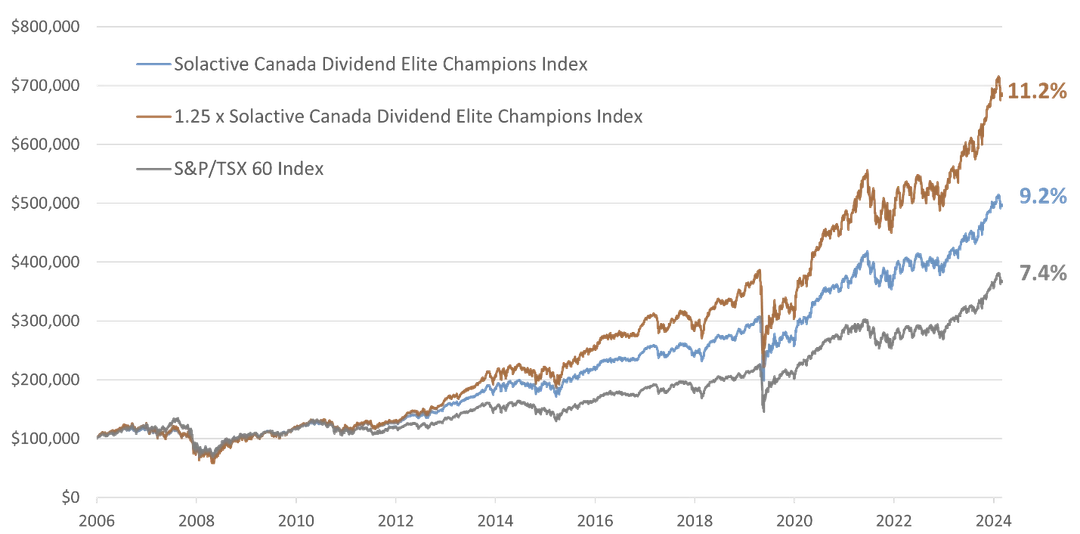

These versions apply 1.25x leverage using margin loans at institutional rates—no swaps, no daily resets, just a straightforward way to invest slightly more in quality companies. This amplifies returns without the excessive risk associated with traditional leveraged ETFs.
What I Dislike About SMVP and CMVP
Overall, these are incredibly solid, non-gimmicky ETFs—and ones I’ve felt the Canadian ETF industry has been sorely missing for years. That said, as always, there’s room for improvement.
For SMVP, my main issue is the currency hedging. In my view, currency hedging doesn’t make much sense for long-term investors and often adds unnecessary drag to performance. I understand the logic: with the USD currently strong against the CAD, a reversal could hurt unhedged ETFs.
But historically, the USD has shown low correlation with the broad stock market, often surging during downturns. This provides a paradoxical benefit—lower portfolio volatility—if left unhedged.
For CMVP, the issue lies in its sector composition, which still mirrors the broader Canadian market a little too closely. There’s an overweight to financials and energy—two sectors that already dominate Canadian equity benchmarks.
While the companies included in CMVP are higher quality and generally larger, I’d personally prefer even stricter sector caps to create more diversification within the Canadian market – overweighting our best-in-class industrials like the railways and consumer staples like grocery stores.
But that’s really it as far as my criticisms go. These ETFs fill a real gap in the Canadian market, and I’m especially excited to see how SMVP performs. It’s one I plan to integrate into my portfolio as a complement to market-cap-weighted ETFs.
